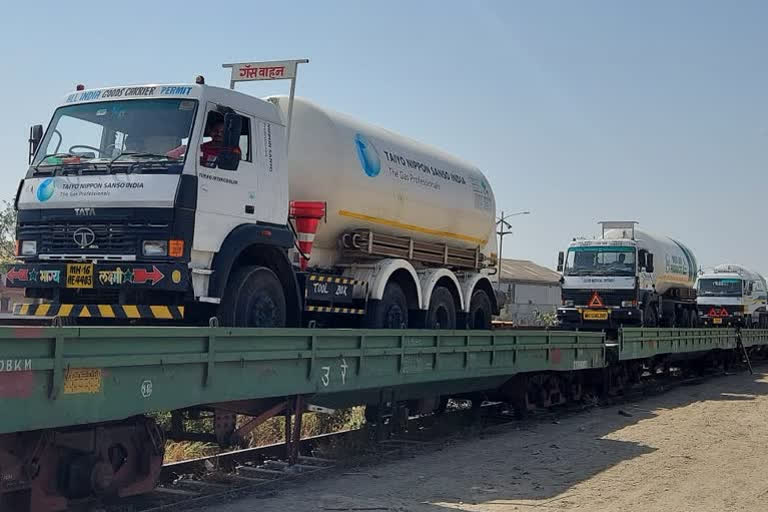New Delhi: Amid the rapid surge in COVID-19 cases, the consumption of oxygen has increased all across the country causing a serious shortage.
In such a scenario, Indian Railways came forward and took initiative to deliver oxygen tanks to the states. Railways started the Oxygen Express which takes liquid medical oxygen from oxygen plants in Vizag, Bokaro, Rourkela in tankers and deliver it to the states.
In the absence of adequate oxygen supply in the national capital, the Delhi Government had requested the Railway Board to start Oxygen Express for the transportation of Oxygen from Rourkela.
"We have given clearance after which they (Delhi Government) have to complete other formalities and give us tankers for loading and other related formalities. We are waiting," said Deepak Kumar, CPRO Northern Railways.
Railways also informed that the Delhi government, in its letter, has asked to load LMO from 9 locations.
"We have examined the feasibility and informed that we can transport LMO from 7 out of these 9 locations and 2 locations are not feasible due to technical reasons. They were also requested to arrange tankers, place indent at the station. ADRM Delhi is being nominated as nodal officer for the purpose. May be we will get indent soon," said RD Bajpai, ADG PRO, Ministry of Railways.
Also read: 'Unmitigated Man-made Disaster', Congress slams Center on Oxygen crisis
Each tanker of the 'Oxygen Express' trains can carry around 16 tonnes of medical oxygen. These trains travel at an average speed of around 65 kmph.
Meanwhile, to fulfil the requirements of Medical Oxygen in Uttar Pradesh, a green corridor was created between Lucknow to Varanasi for the smooth movement of the train. The distance of 270 Km was covered by the train in 4 hours 20 minutes with an average speed of 62.35 kmph.
Another Oxygen Express with Liquid Medical Oxygen (LMO) tankers have arrived at Nashik, while few containers were also unloaded at Nagpur and Varanasi en route to supply LMO in these regions.
A total of 10 containers having nearly 150 tonnes of Oxygen have been carried so far by the Railways.
On Saturday late night, the fourth Oxygen Special, carrying 5 empty tankers, was sent from Lucknow. 4 tankers have left from Charbagh Station and one tanker from Varanasi. This comes on the same day when three tankers had arrived in Lucknow, carrying 51,000 litres of medical oxygen.
Railways also faces a number of challenges during the transportation of Oxygen as it has to avoid sudden acceleration and to check the pressure in between due to the hazardous nature.
Also read: AIIMS emergency dept admissions briefly disrupted as oxygen pipelines reorganized amid high demand
"This journey still remains fastest way to source from a long distance. Trucks would have taken more than a day to make the journey. The journey required recce of the entire route with a new size of special tankers loaded in. The route had tunnels, bends and ghats. This freight train ran non stop. Top priority was given for the movement of the train," said a Railway official.
While the average speed of the train has been set up at 65 kmph, it still takes less time to transport oxygen as compared to road transport.



